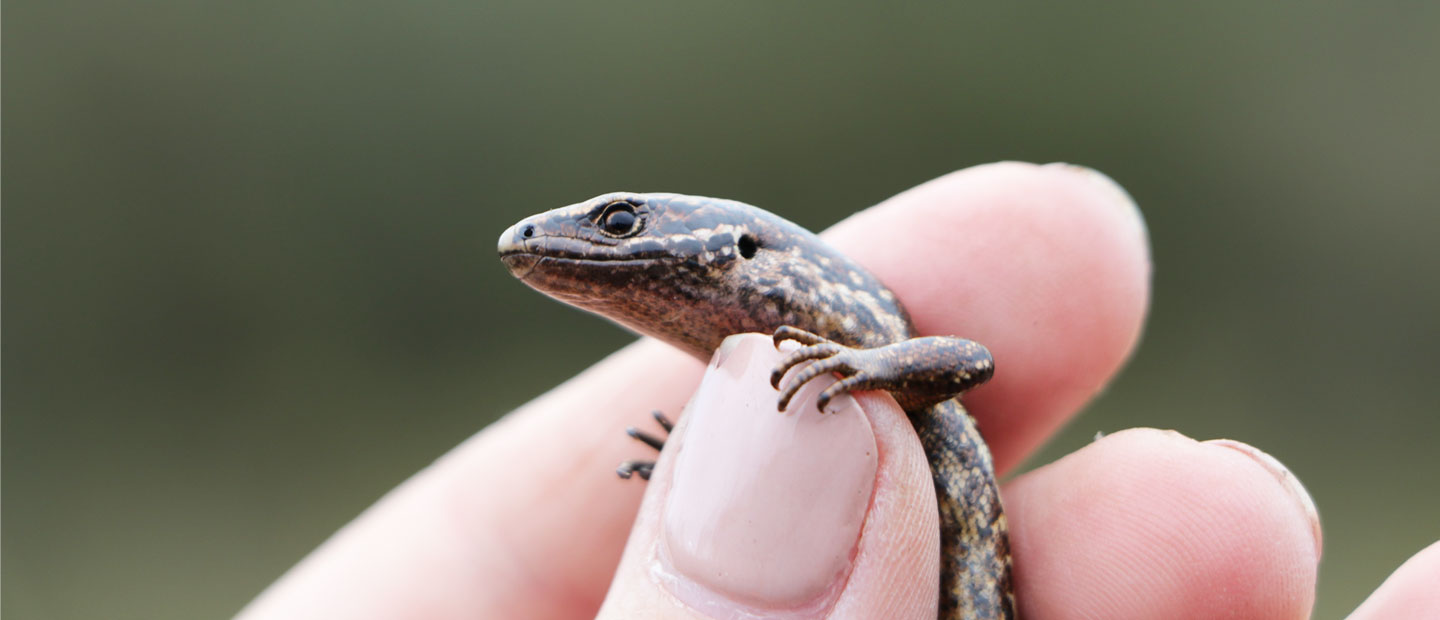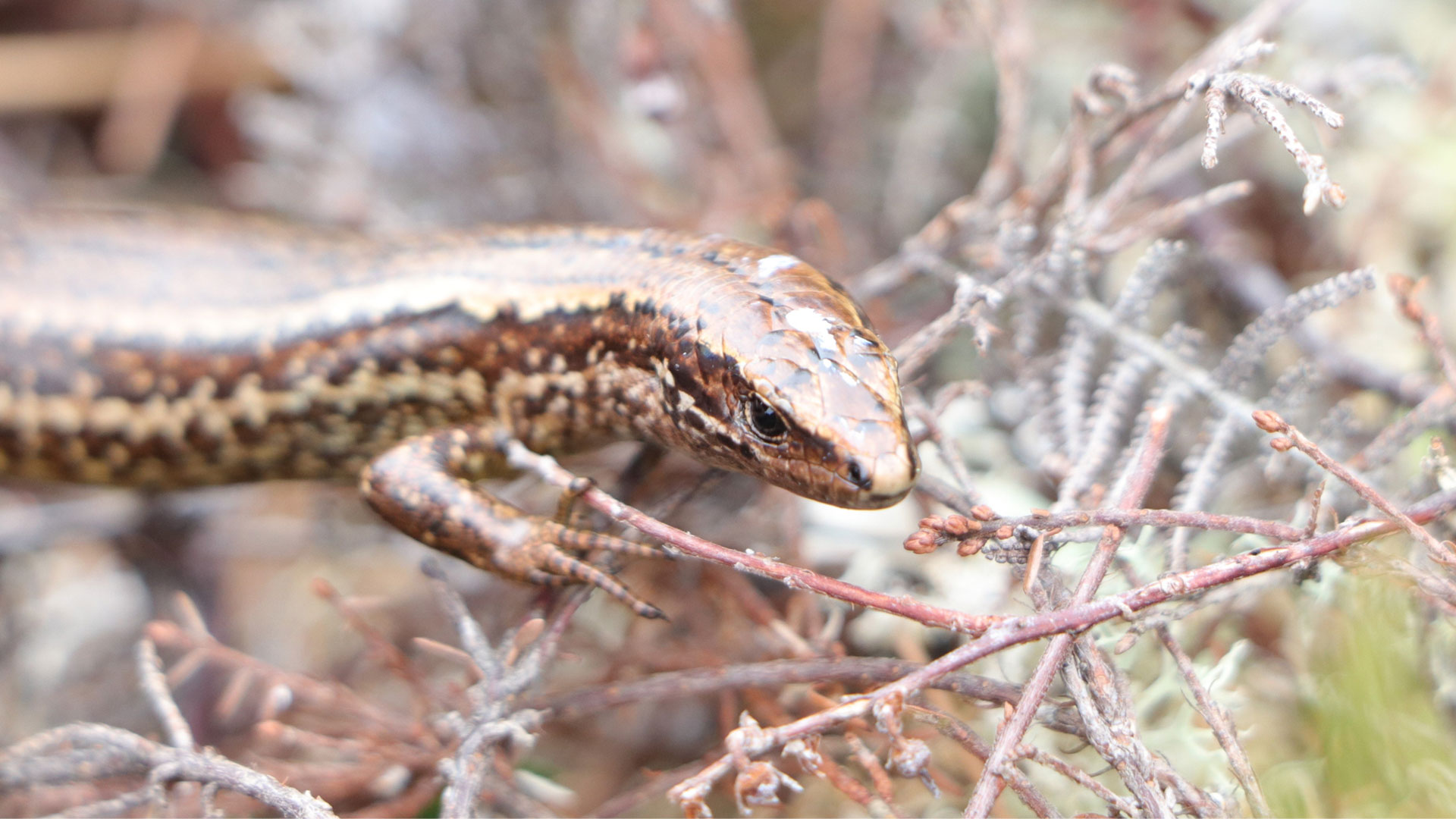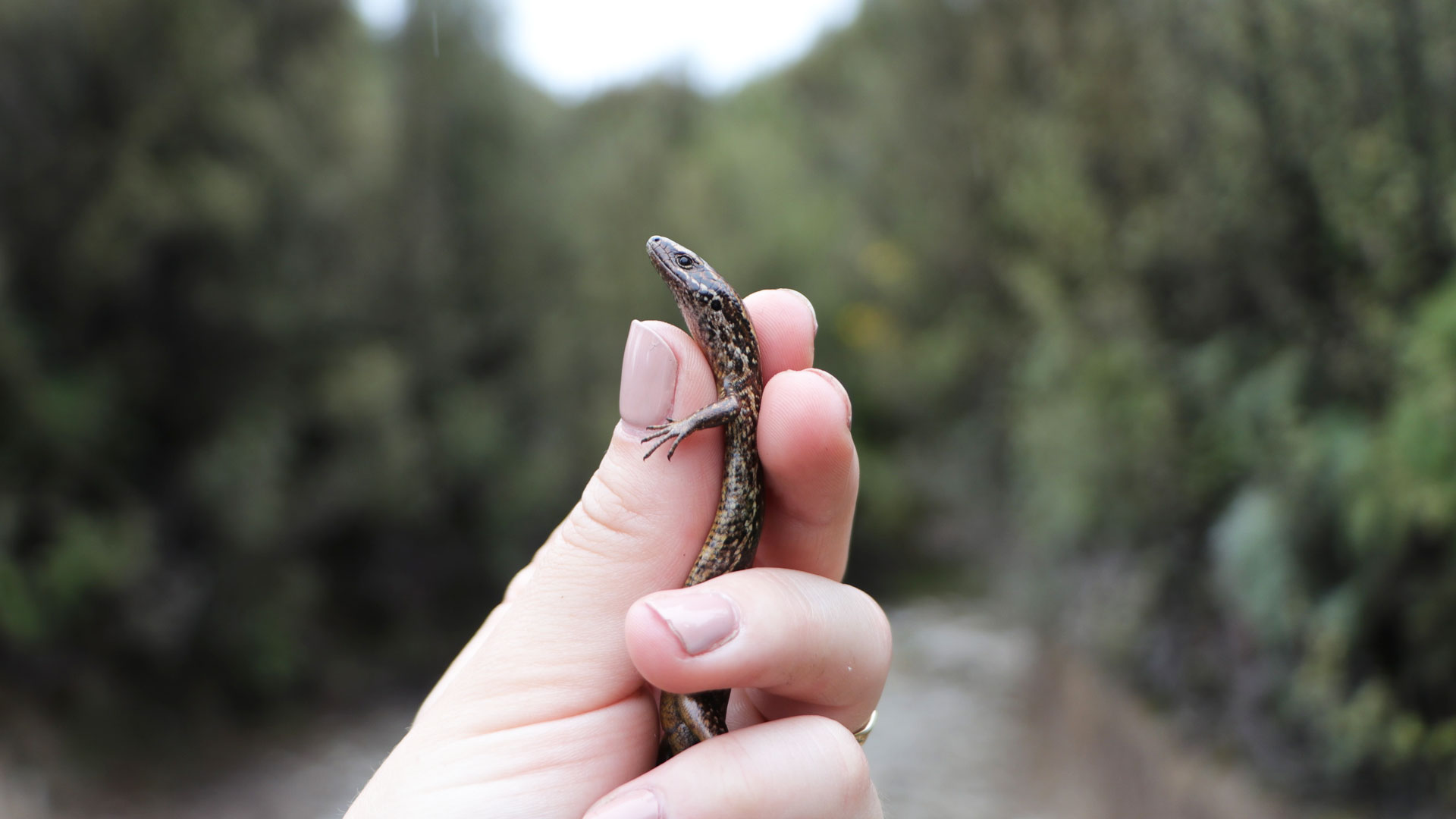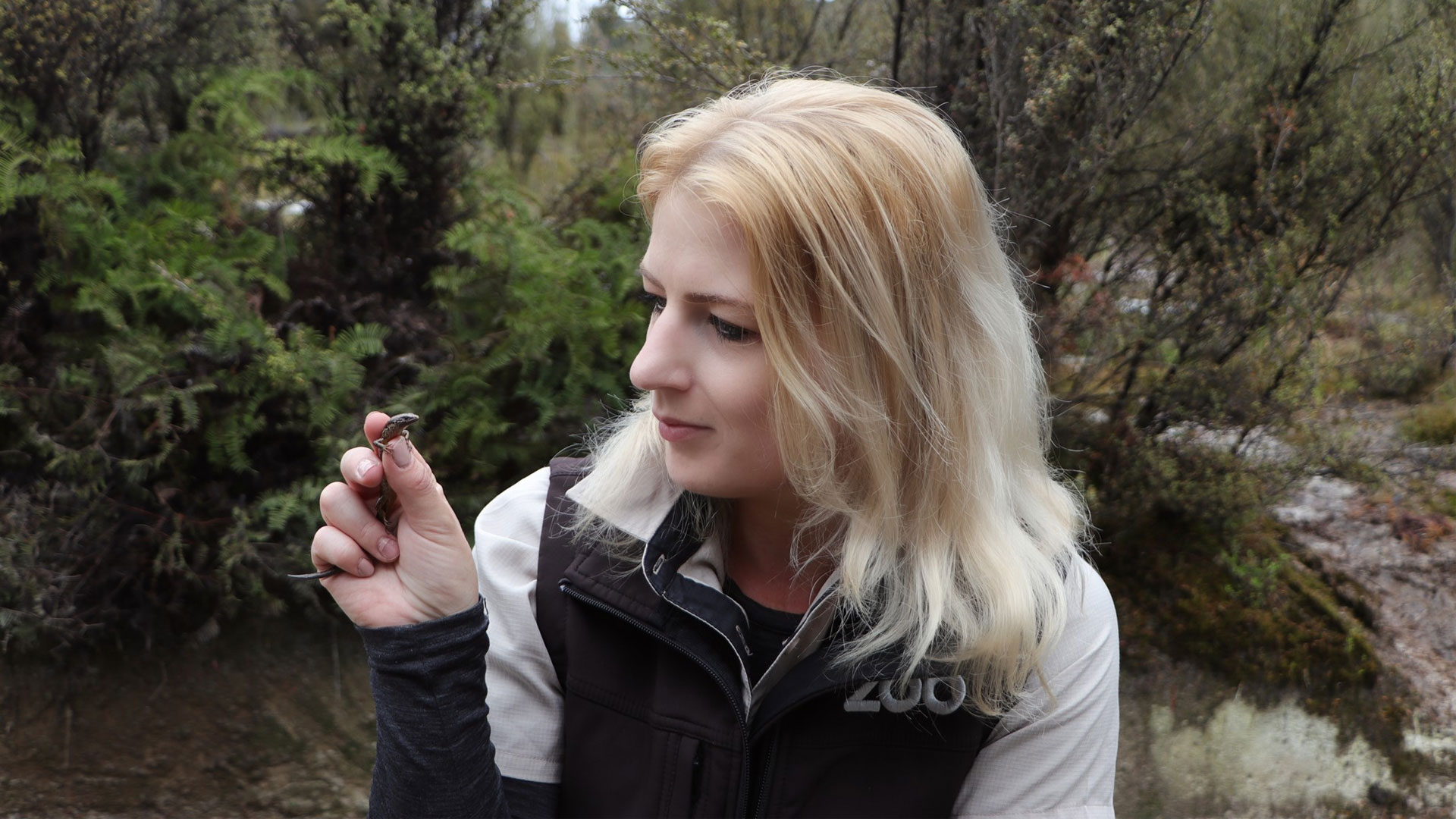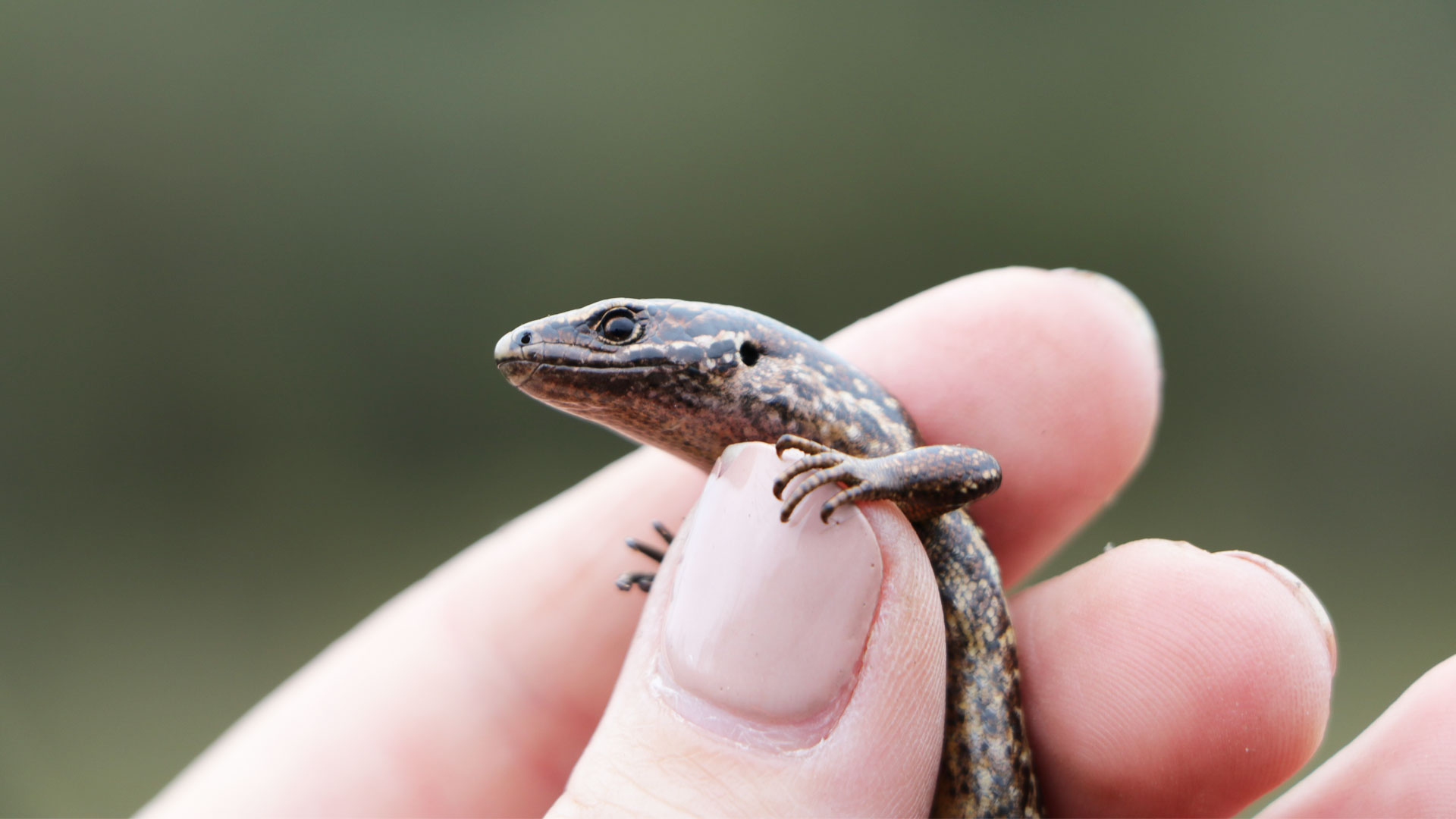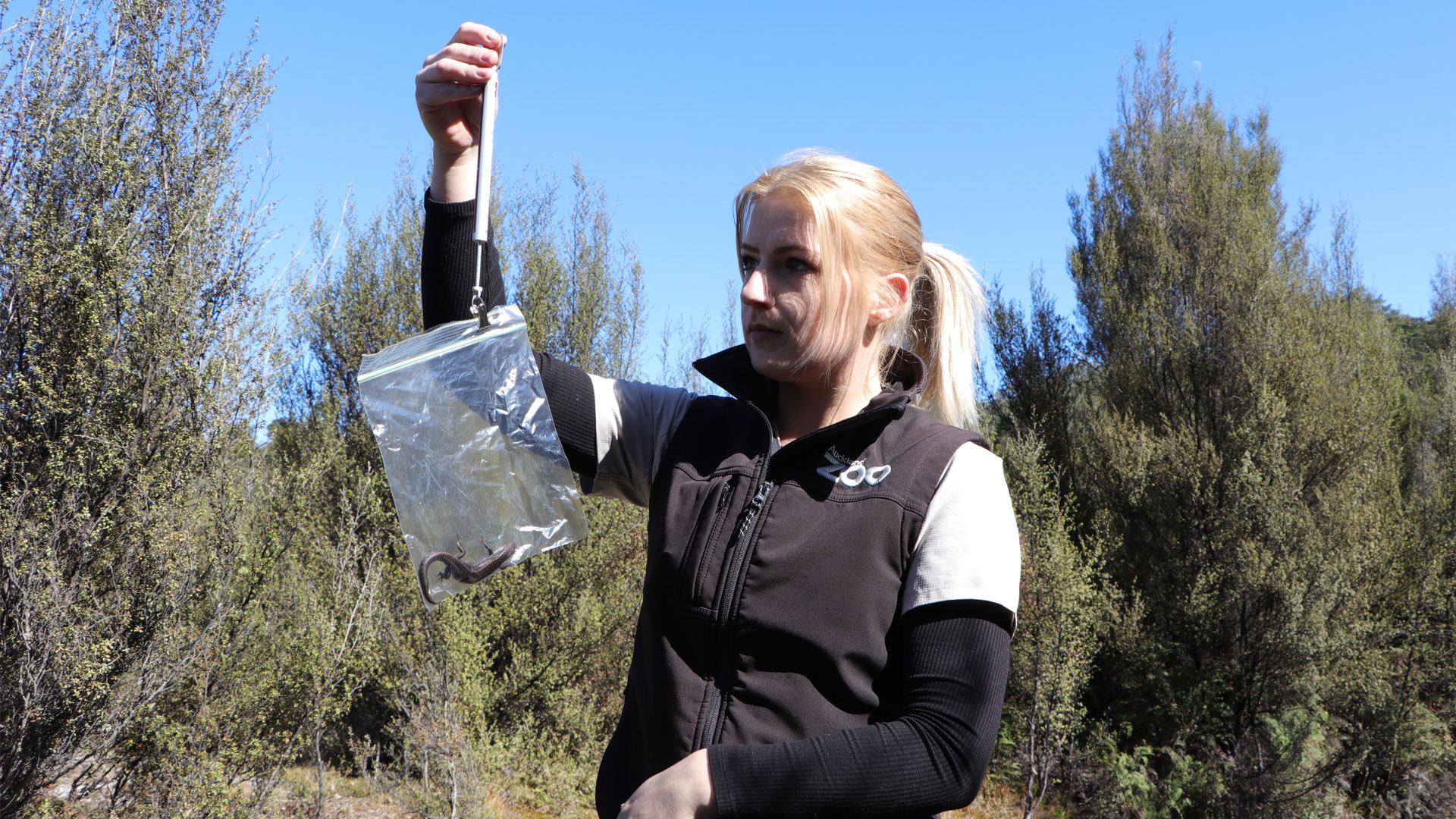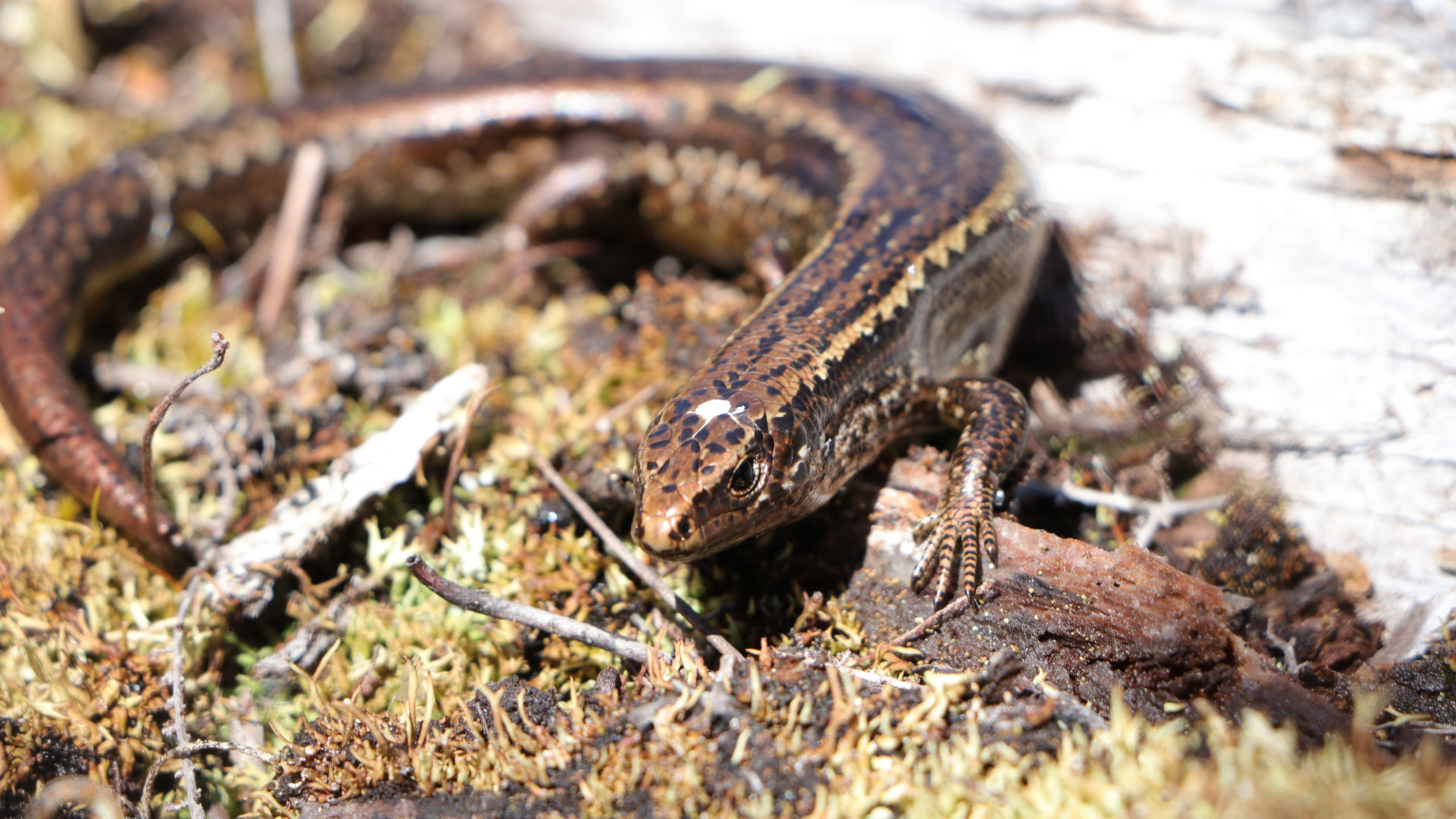Monitoring of the Alborn skink was initiated in 2015 by Department of Conservation, and we’ve recently embarked on a three-year partnership to help intensify this important work. Last November, the first in a series of regular surveys by Auckland Zoo staff took place over eight days. Ectotherm keepers Sonja and Seth diligently searched through an approximately 200x200m area of swampy forest clearing, the only known location for this enigmatic skink, to see how many individuals could be located, and their information recorded.
To determine a species’ population in a given site, a scientific method called ‘mark-recapture’ is used. When an individual is captured a mark is applied on its back with non-toxic paint, and after being weighed, measured and photographed, the skink is released to the same location where it was originally found. This simple visual ID ensures that the same skink won’t be caught-up for a second time if it is seen within the same survey period, and as the mark will eventually rub off, it is a very non-invasive method to use on a wild species. Over a number of days during each survey period, the proportion of ‘new’ versus previously captured and marked individuals can be used to calculate a population estimate.
You may wonder – how can our experts possibly tell the skinks apart in the long term? Each skink has unique markings, most easily observed on its flanks – you could compare these to human fingerprints or the stripes of a zebra. When a new skink is found it is photographed, building up a database – or a scientific version of a family album - to compare with future skinks.


